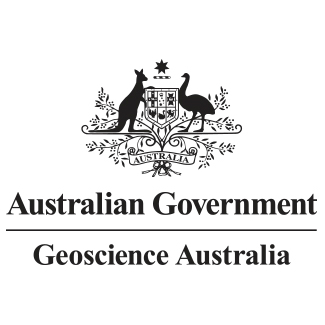Brief description
The Evergreen-Poolowanna Aquitard and Equivalents - Thickness and Extent data set, is one of a set that represents the hydrostratigraphic units of the Great Artesian Basin, which include five major aquifers, four intervening aquitards, and the Cenozoic cover to the GAB. There are five layers in the Evergreen-Poolowanna Aquitard and Equivalents map data A: Formation Extent B: Outcrop extent C: Isopach Raster D: Isopach Contours E: Data Point Locations The datasets have been derived from the lithostratigraphic intercepts in drillhole data from petroleum exploration wells, water bores, and stratigraphic wells. Seismic correlation and assessment of hydrogeological character based on electrofacies have not been used. The working datasest for this study has been derived primarily from the following databases: - PEPS-SA (Petroleum Exploration and Production System - South Australia) (Department of Primary Industries and Regions SA, 2011) - WaterConnect Groundwater database (Govt. of SA, 2011) - QPED (Queensland Petroleum exploration database) (Geological Survey of Queensland, 2010). - GABLOG (Great Artesian Basin Well Log Dataset) (Habermehl, 2001) - Additional supplementary information was derived from published reports listed in the following section. Interpretations by OBrien & Wells, (1994); and O'Brien 2011 were used in generating the isopach data (thickness surface and contours) along the boundary of the Surat and Clarence-Moreton Basins. This is a regional interpretation for mapping at approximately 1:1 000 000 to produce a broad scale overview, and examination of small areas by collecting extra data is most likely to produce results that differ from this regional interpretation. This dataset and associated metadata can be obtained from www.ga.gov.au, using catalogue number 81683. Associated report reference: Ransley, T., Radke, B., Feitz, A., Kellett, J., Owens, R., Bell, J. and Stewart, G., 2015. Hydrogeological Atlas the Great Artesian Basin. Geoscience Australia. Canberra. [available from www.ga.gov.au using catalogue number 79790] REFERENCES: References - main data sources - Department of Primary Industries and Regions SA (2011). Petroleum Exploration and Production System - South Australia (PEPS-SA). Version 2011-06-15. Retrieved from http://www.pir.sa.gov.au/petroleum/access_to_data/peps-sa_database - Geological Survey of Queensland (2010). Queensland Petroleum Exploration Data (QPED) database. Retrieved 25 September 2011, from http://mines.industry.qld.gov.au/geoscience/geoscience-wireline-log-data.htm. - Geoscience Australia, 2013. Mesozoic Geology of the Carpentaria and Laura Basins (dataset). Scale 1:6000000. Geoscience Australia, Canberra. [available from www.ga.gov.au using catalogue number 75840] - Gibson, D. L., B. S. Powell & Smart, J. (1974). Shallow stratigraphic drilling, northern Cape York Peninsula, 1973. Record 1974/76. Australia, Bureau of Mineral Resources. - Govt. of South Australia (2011). WaterConnect Groundwater database [available at https://www.waterconnect.sa.gov.au]. - Habermehl, M. A. and J. E. Lau (1997). Hydrogeology of the Great Artesian Basin Australia (Map at scale 1:2,500,000). Canberra, Australian Geological Survey Organisation. - O'Brien, P. E. (2011). The eastern edge of the Great Artesian Basin: relationships between the Surat and Clarence-Moreton basins. Internal report. Canberra, Geoscience Australia. - Wells, A.T. , O'Brien, P.E. 1994 Lithostratigraphic framework of the Clarence-Moreton Basin IN Wells, A.T. and O'Brien, P.E. (eds.) "Geology and Petroleum Potential of the Clarence-Moreton Basin, New South Wales and Queensland" Australian Geological Survey Organisation. Bulletin 241 p4-47 References - Seismic Surveys - none References - Well Completion Reports and drilling logs - noneLineage
Maintenance and Update Frequency: notPlanned
Statement: METHOD:
Formation Extent
Extents were based on drill hole data (listed above).
Extent lines were adjusted to envelop all drill hole intercepts of the Hydrostratigraphic unit. This produced some varied and irregular shapes, some patchy regions, and required some interpretation to establish the most likely extent boundary.
Outcrop Extent
Outcrop extents were sourced and extracted from Hydrogeology of the Great Artesian Basin Australia (Habermehl & Lau, 1997) for the Eromanga and Surat sub-basins. For the Carpentaria Basin, Mesozoic Geology of the Carpentaria and Laura Basins (Geoscience Australia, 2013) was used.
Isopach Raster
Source point thickness values calculated from drillhole intercepts by using the depth to top and bottom values of formations within the drillhole database attributes, and adding them together to form the isopach values for each data point across the whole aquifer/aquitard.
These values were extrapolated using the ESRI ANUDEM Topo-To-Raster surface modeller tool to create grid surface. Zero thickness constraints were applied at the known extent of the aquifer/aquitard, except in cases where the formation extends beyond the GAB boundary (for example the Precipice formation on the eastern side of the GAB, where the formation is quite thick and is exposed as a cliff). In these cases, constraints were not applied and the software was allowed to model a thickness right up to the GAB boundary. Resulting grids were modified using the ESRI Grid Calculator to set the minimum thickness to 0, and clipped to the aquifer/aquitard extent.
Isopach Contours
Isopach contours were calculated from the Evergreen-Poolowanna Aquitard and equivalents thickness grid using the ESRI Contour Tool. These were calculated at 50m intervals. In most cases the zero contour lines generated by the tool were replaced by the extent of the aquifer due to the erratic nature of the generated lines. In cases where the aquifer/aquitard is thick at the extent, the zero isoline is outside the extent and is not mapped in that area. Isopachs were clipped to the aquifer/aquitard extent.
Data Point Locations
Data Point Locations have been derived from the bore hole data collected for this project. Only the location has been included.
SOFTWARE:
All modifications/edits and geoprocessing were performed using ESRI ArcGIS 10 software.
Issued: 2015
text: westlimit=132.07; southlimit=-33.69; eastlimit=153.18; northlimit=-9.01
Subjects
Earth Sciences |
GIS Dataset |
NSW |
NT |
Published_External |
QLD |
Regional |
SA |
geoscientificInformation |
User Contributed Tags
Login to tag this record with meaningful keywords to make it easier to discover
Other Information
Download the data (shp)
Identifiers
- URI : pid.geoscience.gov.au/dataset/ga/81683

- global : fc3eec81-5e56-6f5c-e044-00144fdd4fa6


